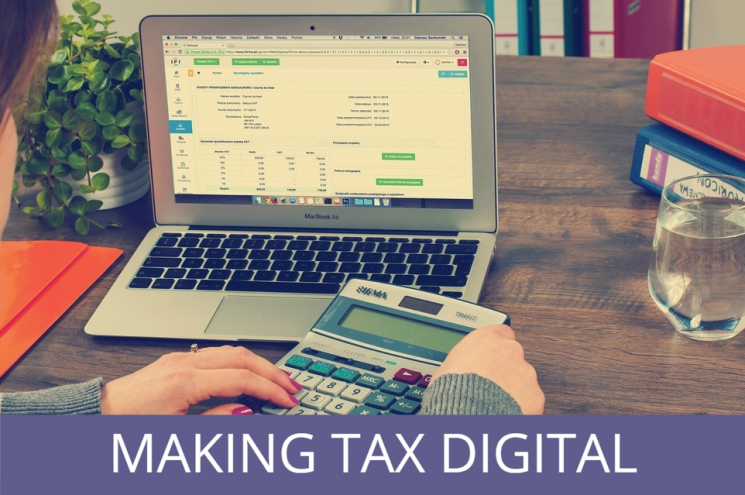An essential part of the government’s current strategy to ease the burden on individuals and businesses, Making Tax Digital (MTD) has dominated the conversation for companies struggling to manage their reporting and record keeping. But with so much information available it can be challenging to understand where your business sits and the potential role MTD can play in helping you move forward.
So, what exactly is MTD and what does it mean for businesses?
What is MTD?
First announced in 2015, Making Tax Digital is a key government strategy and the UK’s recent attempt to become a world leader in taxation and reporting – with many businesses and government agencies expending untold working hours to manage tax. HMRC has rolled this out in the form of a three-fold commitment, wanting the taxation and reporting process to be more effective, efficient, and easier for those submitting their information to ‘get right’ first time.
In practical terms, this means bringing ‘self-assessment’ to a close and implementing a fully digital taxation system by the end of this year. This applies to a wide range of entities that pay tax from regular taxpayers, the self-employed, large and small-scale businesses, landlords and more. In order to be fully compliant, most these individuals will need to use an accounting system that is compatible with MTD.
How can MTD help you?
One of the key benefits of Making Tax Digital is its ability to unify your returns. Instead of carrying out regular tax returns, individuals will be able to collate their key tax information into one location. This will enable users to access and review their information in real time and be a one-stop-shop for any key compliance actions. This allows for the updating of information, applying for new services, and reviewing their payment options, and more.
While the process may seem difficult and time consuming, complying with MTD carries a number of significant long-term benefits. These include but are not limited to-
Streamlined Access: Allowing you to access your information from one point and change it as required cuts down on a lot of the legwork. This can help improve productivity and help you reduce the number of working hours spent on filing.
Error Reduction: Enforcing key steps and processes helps reduce the risk of mis-filings or late submission. And by moving to a digital only system, any incorrect data can be easily earmarked and addressed, helping to guarantee the delivery of quality data every time.
Additional Value: Automating and streamlining many of the administrative processes can result in your advisor spending less time on the ‘nuts and bolts’ of compliance and more time giving strategic or high-level advice. This allows you to get more from your working relationship while still providing the oversight that you need.
How does MTD affect my business?
As of the current timeline, MTD is mandatory for businesses with a turnover of over £85k per annum and optional for any businesses below that threshold. If your business is required to file quarterly, this also becomes a responsibility that is handled through digital record keeping.
A digital record contains information about your business that is stored on an electronic device and is either a copy or image of a physical record or contains a digital entry into an acceptable software solution or platform.
What are the potential risks?
One of the biggest risks for businesses facing MTD is the threat of non-compliance. While the initial deadline (1 April 2019) has passed, failing to fully file digitally can result in severe penalties and – at a minimum – the automatic allocation of late fines.
Where a £100 automatic penalty was allocated in the past, recent changes have switched up to a points based system that will increase the value of the fines for the number of points acquired. These last for 24 months and act as a continuing deterrent, with repeated late filings carrying significant penalties.
Failing to take the time to understand the system and the process can also act as a significant roadblock, especially when you are managing your current approach. Assuming that your system can connect to HMRC to relay information is a potential issue and every step possible should be taken to ensure that you can tabulate and submit your tax returns before it becomes a serious issue.
Common questions around Making Tax Digital for VAT answered
Here is a list of some frequently asked questions and their answers which might help you get your head around MTD.
Does MTD affect (or benefit) me?
While MTD is only currently required by businesses that turn over £85k or more, taking the time to review your current approach may highlight a need for a digital system. In addition to allowing for an extra degree of analysis and control, finding the right platform can future-proof you against forthcoming change and allow for compliance, and data capture that can be of benefit to your business.
What is ‘Digital Link’?
An important part of your compliance process, your ‘digital link’ is the method and means of data transfer between the different elements that make up your MTD system. While some businesses will use an all-in-one package, it is essential that your system is fully reviewed to understand your overall digital hygiene. Once data has been added to the system, records can only be adjusted by using a verified ‘digital link’ – which does not include copy, cut, or paste – to alter it. This makes it vital to understand and road test your system before going live and check that it is fit-for-purpose and does not contravene GDPR.
Which accounting software platform is right for me?
Finding the right MTD accounting software can help you secure a platform that work for your needs. And, if you are in doubt, getting in touch with a professional team can help you secure the guidance you need when it matters most or better understand your current and future needs. This should always begin by checking if the accounting software platform is acceptable by HMRC. While they are not explicitly vetting systems, they require VAT information to be sent through a secure API for authentication.
MTD is here to stay. The more businesses can adapt now to the changes, the more prepared they will be for future challenges. If you need more information and guidance around MTD, then you can seek guidance from HMRC’s dedicated support for MTD or an accounting firm.





